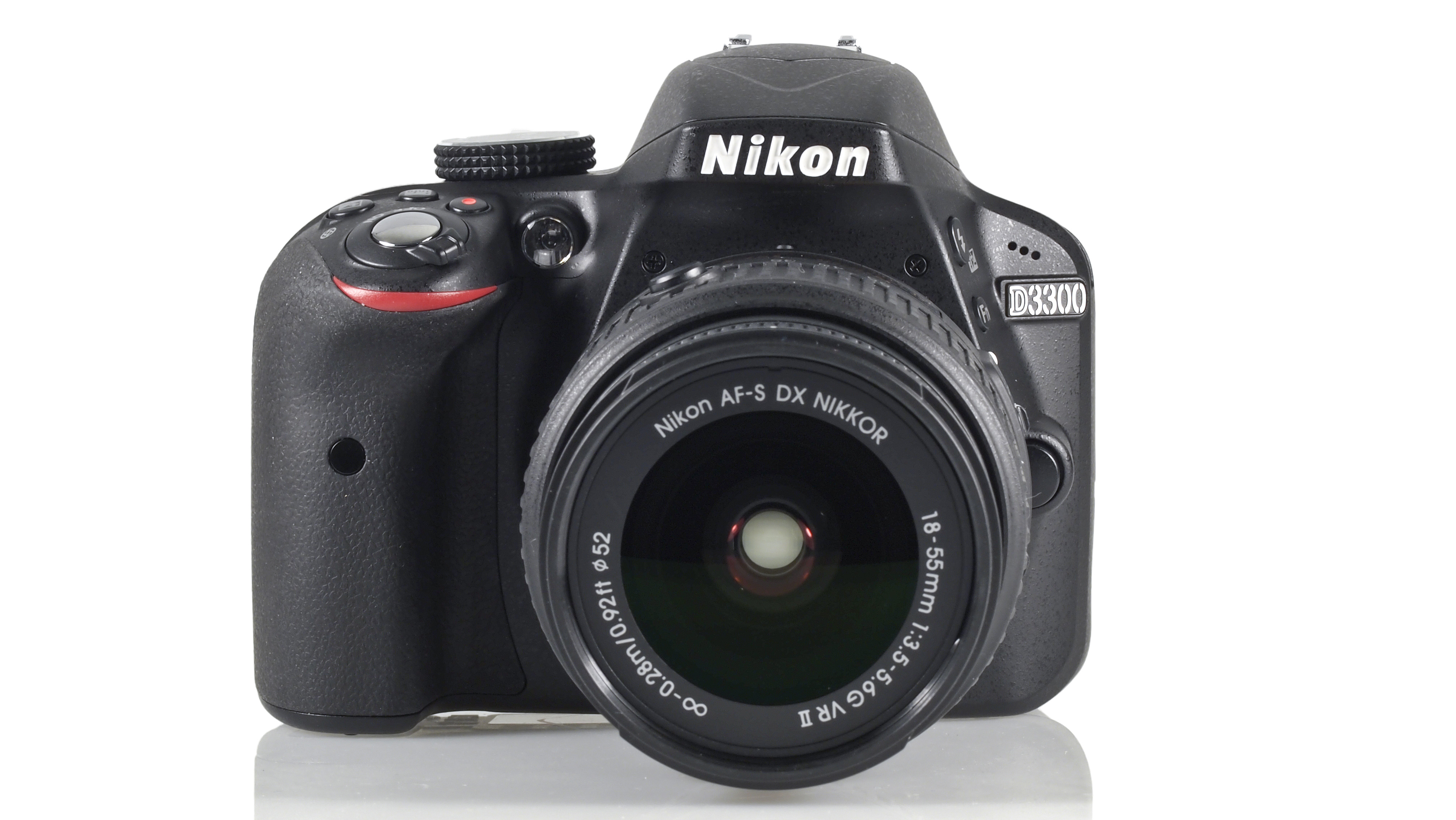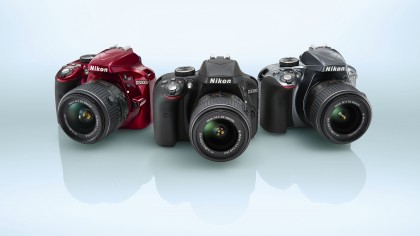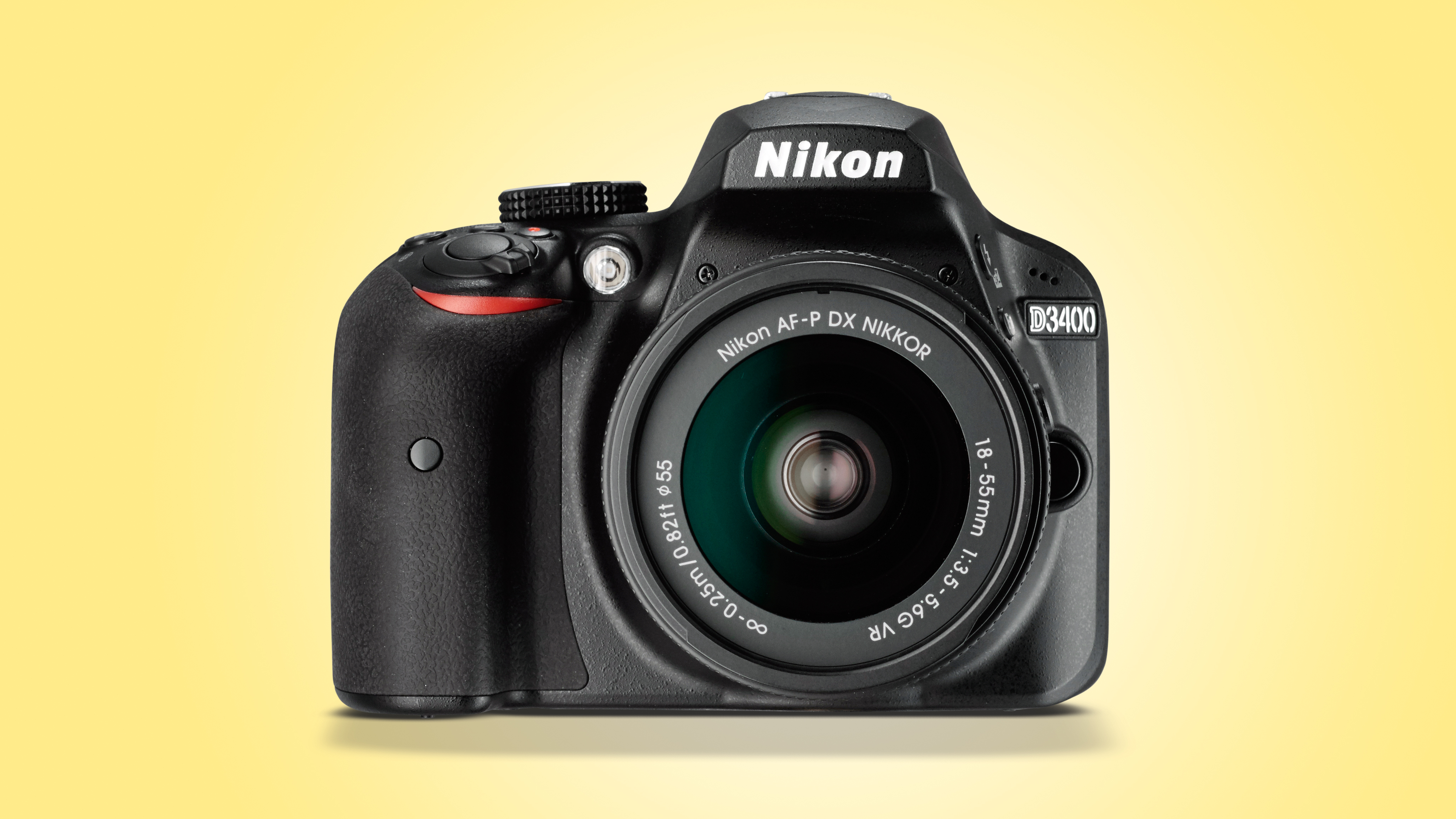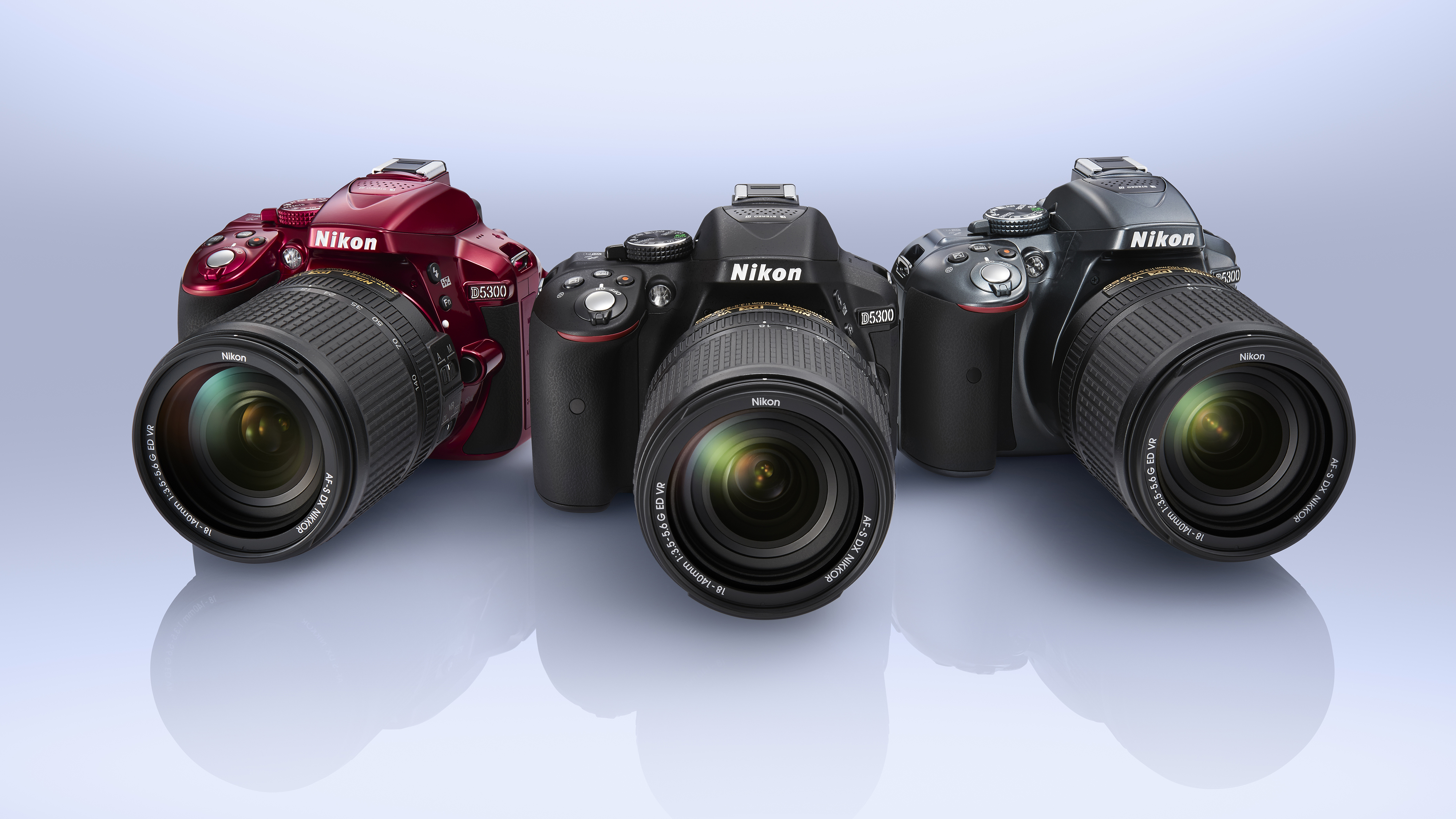The Nikon D3300 may have been replaced by the D3400, but that’s no reason to discount this entry-level DSLR.
Despite the growing popularity of mirrorless cameras, the entry-level DSLR market is still incredibly popular for those looking to take the next step in their photography journey.
Nikon’s range of D3xxx models has proved incredibly popular over the years for new users looking to expand their creativity thanks to their blend of easy handling and solid performance, backed-up by an impressive range of lenses and accessories.
Features
- APS-C CMOS sensor, 24.2MP
- 3.0-inch screen, 921,000 dots
- 1080p video capture
- Non-low-pass filters explained
Like the Nikon D5300, the D3300 sports Nikon’s now second-generation processing engine, the EXPEED 4, allowing the D3300 to shoot continuously at a maximum rate of 5fps, while it can sustain this burst rate for up to 100 fine quality JPEGs. More than enough for most people’s needs.

There are a host of Special Effects on tap, allowing you to jazz-up JPEG files and videos with a collection of styles. Nikon has boosted the list of effects to 13 for the D3300, and it now includes Pop, which increases colour saturation, Toy Camera, which creates a retro effect, and Easy Panorama. These effects can be previewed in real time on the LCD screen, so you can see exactly what you’ll get once you trigger the shutter.
The D3300 has a dedicated 420-pixel RGB sensor to gather exposure, white balance and focus information to inform the Automatic Scene Recognition system. Meanwhile, there’s an 11-point AF system that we’ve seen on a host of previous models, which has a central cross-type AF point for extra sensitivity.
It’s a little unremarkable, especially when compared to some mirrorless rivals, but its a tried and test system.
Finally, although the D3300 uses the same battery as the D3200, we are told that the new processing engine allows the camera to be more efficient in its power consumption, and the battery is claimed to last for around 700 shots – we’ll be keen to put that claim to the test during our review.
- Which camera should I buy?
Build and handling
- Polycarbonate construction
- Small and lightweight body
- 460g
Nikon has also reduced slightly the size of the camera when compared to the D3200, but placing the two side by side doesn’t reveal too dramatic a difference. The grip is still deep and comfortable to hold, with the textured surface making it feel particularly secure in the hand.

When you want to use the camera (with this kit lens attached), you’ll first need to press a button on the lens barrel to expand it back into normal proportions. This does mean that start-up time from packed away is a little slower than other cameras, but you can of course leave it extended if you need a quicker start.

There isn’t a huge number of buttons on the D3300, which is to be expected of an entry-level camera. On the top plate you’ll find a mode dial for switching between exposure modes, such as fully automatic, aperture priority and the newly incorporated Effects mode. Also on the top plate you’ll find the exposure compensation button (for use in automatic and semi-automatic modes) and an info button, which helpfully turns off the rear display, preventing it from being a distraction while using the viewfinder.
A sort of quick menu is accessed on the D3300 by pressing a button labelled ‘i’ on the back of the camera. After you’ve pressed this, use the directional keys to pick a setting you want to change – such as white balance – and then press OK to bring up the different options available to you. Unfortunately, this menu isn’t customisable, so if there’s something on this menu you rarely use, you’re stuck with it.

Autofocus
- 11-point AF, 1 cross-type AF point
- AF-assist illuminator
- 3D-tracking AF
It’s worth bearing in mind, though, that focusing speeds drop significantly when using Live View, so it’s only really recommended you use that if you’re shooting something stationery, or you’re shooting from an awkward angle and can’t compose using the viewfinder.
Changing the AF point is very simple. All you’ll need to do is press the directional arrow keys to move around to the point you need. As the central AF point is cross-type, it is more sensitive than the others, so you may find it beneficial to focus and recompose in certain situations, or, if you’re just aiming for speed.

- Best entry-level DSLR
Performance
- 5fps burst shooting
- Helpful Guide mode
- 700 shot battery life
That brings us to the user interface. The D3300 has a pleasingly modern appearance, with the high resolution giving the display beautifully rounded edges and displaying the interface’s colours well.

When shooting, the camera displays three circles which represent shutter speed, aperture and sensitivity (ISO). These displays change as you alter settings using the scrolling dials, most obvious being the aperture circle which closes and opens to represent the opening and closing of the aperture blades. If you’re new to creative photography, this is a great way to get to grips with the basics.

The viewfinder is optical and offers a 95% field of view. While it is bright and clear, not being 100% does mean that there is a chance of something appearing in the final image that you didn’t notice in composition.
I was very impressed by the D3300’s battery performance. After a day of shooting, checking images and then scrolling through saved images, the battery life indicator hadn’t even dropped a single bar.
In the majority of everyday shooting conditions, the D3300’s general-purpose metering does a good job of producing accurate exposures.
Automatic white balance is similarly impressive, managing to produce accurate colours even while shooting indoors. The only time I had to change from the automatic setting was when shooting a row of red outdoor lights, when the camera got a little confused and produced a slightly colder colour than I would have liked. Otherwise, shooting under normal household artificial lights produces images which are very close to accurate, hardly erring towards warm tones at all, which is excellent to see in an entry-level DSLR.
Image quality
- ISO100-12,800, expandable to 100-25,600
- No low-pass filter
- Punchy colors
With such a high pixel count (24 million pixels), there comes the increased chance of noise appearing in images. The D3300 handles low light, high sensitivity situations very well. Noise only really starts to become particularly apparent when shooting at ISO 3200 above, and even then it’s acceptable, or certainly preferable to a blurred or missed shot.

One of the benefits of having a large pixel count is the ability to crop images and still retain a decent resolution, but this is something to bear in mind if you’ve been shooting at a high sensitivity and want to crop an image. Any image smoothing or noise may become more apparent the more you crop the image.
- Best DSLRs

At normal printing and web sizes, this image, shot at ISO1,600, appears fine, but if you zoom in to 100%, you can see a fair amount of color noise int he sky. The D3300 seems to prioritize keeping detail over noise reduction, so this is to be expected in certain situations.

Tones directly from the camera are natural, which is useful for pleasing portraits.

You can still get pleasing shallow depth of field effects using the kit lens, even though it only stops down to f/3.5.

The 18-55mm lens offers flexible focal length options, making it ideal for shooting a number of different situations. This was shot at the maximum telephoto end of the optic.

Colour reproduction is excellent, even when shooting subjects which may ordinarily confuse other cameras, such as neon lighting.

Colours are bright and punchy directly from the camera.

In this scene, all-purpose metering was a little thrown by the mixed lighting conditions, so I needed to dial in +1 exposure to produce a more balanced image.
Despite the arrival of the D3400, you should still be able to get hold of the D3300 – and with a bit of luck, at a discounted price.
So which camera should you buy, the D3300 or D3400? We’ve also reviewed the D3400, but on paper at least, they look very similar.
Let’s take a look at some of the key features of both cameras and see how they compare and whether it’s worth spending a bit more to get Nikon’s latest entry-level camera.

1. Sensor
Both cameras feature 24.2MP APS-C CMOS sensors, with the D3400 like the D3300 opting to go without the anti-aliasing filter, so we should expect pretty much near identical results in most scenarios.2. ISO range
Here we see a slight difference, with the D3400’s native ISO range at 100-25,600, compared to the D3300’s native ISO range of 100-12,800, extendable to 25,600. While they may have the same upper ISO ceiling, we can expect to see a slightly better performance from the D3400 at higher sensitivities.3. Autofocus

Both cameras here sport Nikon’s Multi-CAM 1000 autofocus sensor module with 11 AF points to choose from, with a cross-type sensor (for greater accuracy) at the centre.
4. Continuous shooting
With both the D3300 and D3400 using Nikon’s EXPEED 4 image processor, both offer the same 5 frames per second (fps) burst shooting. Neither are going to compete with a proper sports camera, but both offer a solid performance none-the-less.5. Weight
Nikon’s managed to make some minor weight-saving gains with the D3400, shaving a very modest 15g off the 410g body-only weight of the D3300. Definitely lighter, but whether you’ll notice that after a day or shooting is hard to say.
6. Battery life
Both cameras feature a EN-EL14a rechargeable battery, but with the reduced power-consumption of the D3400, Nikon reckon that it can carry on shooting up to a very impressive 1200 shots, compared to the D3300’s 700 shots.7. Connectivity
Perhaps the biggest difference between the two cameras is the level of connectivity offered. Neither feature Wi-Fi connectivity (though you buy the optional WU-1a Wireless Mobile Adapter to make it so), but the D3400 features Nikon’s SnapBridge technology – a feature we first saw on the D500.This functionality allows the D3400 to be connected wirelessly to your smartphone or tablet. Thanks to a low-power Bluetooth connection, it enables images to be automatically transferred to your device as you shoot.
You get a lot of seriously good kit for your money. For starters, the 24MP sensor is capable of producing excellent levels of detail that gives beginner users who are short on lenses the double benefit of being able to crop into the scene for extra reach if needed.
Updating the user interface to give it a crisp and clean look is also a smart move – most of the other manufacturers have stuck with the same UI for some time now, and some are starting to look a little dated. The Guide Mode continues to be something which makes this camera appealing to novice users as well, not having to dig out the manual or search online for help is especially useful when you’re out shooting with the camera and get a little stuck.

It’s a bit of a shame that this camera doesn’t have built-in Wi-Fi connectivity, as this would probably have been even more enticing to beginner users who are used to sharing their shots instantly from smartphones – those that hanker for that might want to look at the D3400.
There’s also no touch or articulating screen, which is perhaps to be expected at this price point, but does make some of the entry-level compact system cameras which do offer this functionality all the more appealing.
The entry level market is likely to continue to be hotly contested, but Nikon shows no sign of losing its grip on this very important market.
In a nutshell, the D3300 is an excellent choice for those who want to purchase their first DSLR.
Competition

Nikon D3400
The update to the D3300 is very similar, with the key difference the inclusion of SnapBridge technology for streamlined transferring of images from camera to your smart device, while the battery life is that bit better. Costing quite a bit more currently than the D3300, it should drop in price in time.Read the full review: Nikon D3400

Canon Rebel T6 / EOS 1300D
On paper the Rebel T6 (EOS 1300D outside the US) isn’t quite as well specified as the D3300, with an 18MP sensor, 9-point AF system, more restricted ISO range and a battery that has nowhere near as much juice per charge, although it does offer Wi-Fi which the D3300 does not.Read the full review: Canon Rebel T6 / EOS 1300D

Nikon D5300
Further up the range and you come to the D5300. Its impressive spec sheet makes it well worth considering. You get a host of superior tech inside a better-built body, including a 39-point AF system, Wi-Fi, GPS and a larger, higher-resolution articulating LCD screen.Read the full review: Nikon D5300
- Mirrorless vs DSLRs: 10 key differences
TechRadar: Cameras and camcorder reviews

Visit here for more on Digital Photography.
Read more on Camera Tips.